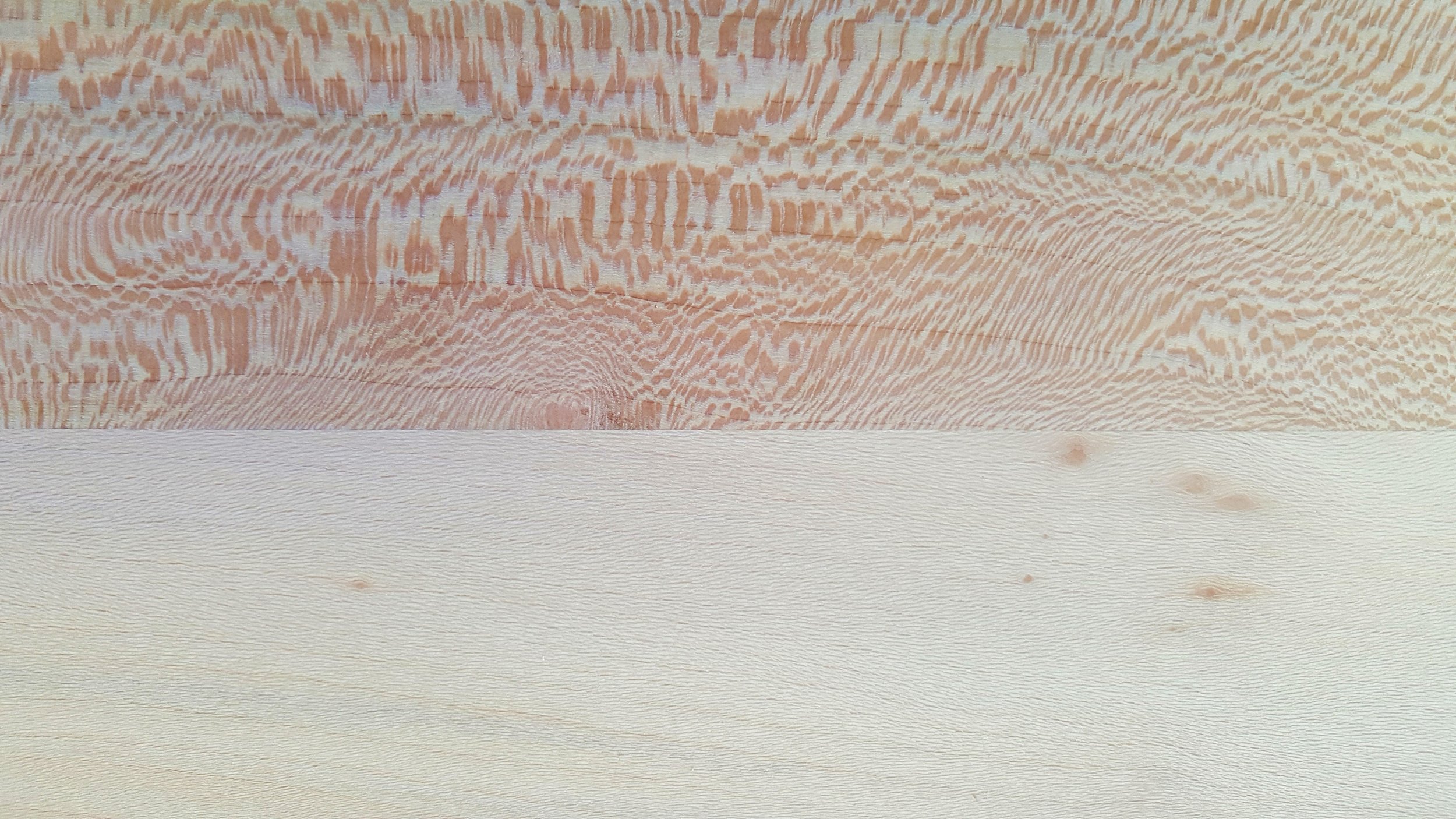The timber of the London Plane is uniquely exotic and varied in its appearance for a homegrown timber. The young pale tone to the mature timber with its orangey tea brown colour and every shade in between. Then there are the black streaks of the Blue Stain fungal disease and then the fortuitous spalting effect when the blue stain meets a second fungus and the two fight it out until clear black lines are formed along their battle lines.
This fascinating timber can reveal yet more character depending on how it has been cut when converted from a tree into timber. London Plane has wide and twisting medullary rays, often iridescent structures that grow perpendicular to the grain which surface in decorative flecks. They look beautiful in Oak, consistent and even in Beech but outrageous in London Plane. These fantastic rays are revealed by quarter-sawing the tree rather than sawing straight through. The medullary rays grow perpendicular to the grain so to reveal this prime quality of the timber, you saw the logs perpendicular to the surface (as best as you can on the round) and in four quarters. As you can see from the diagram below - this is much more wasteful than a plain cut straight through the boards and is subsequently more expensive to purchase.
Quarter sawn Lacewood and regular London Plane
My first major work using London Plane was a timber re-use commission for Lend Lease for their Elephant Park development at Elephant & Castle in South London, making furniture pieces from timber felled on site. I was immersed in this project for several months and looked at and touched nothing but London Plane, dealing with its various idiosyncrasies and qualities. However, the first London Plane timber I used was supplied by friend and woodworker, Jeff Segal, who spotted a fallen giant in the garden of a West London vicarage. A Lucas mill - a mobile milling system involving a chainsaw was called in to convert the tree into timber. An account of this can be read on Jeff’s Blog.



